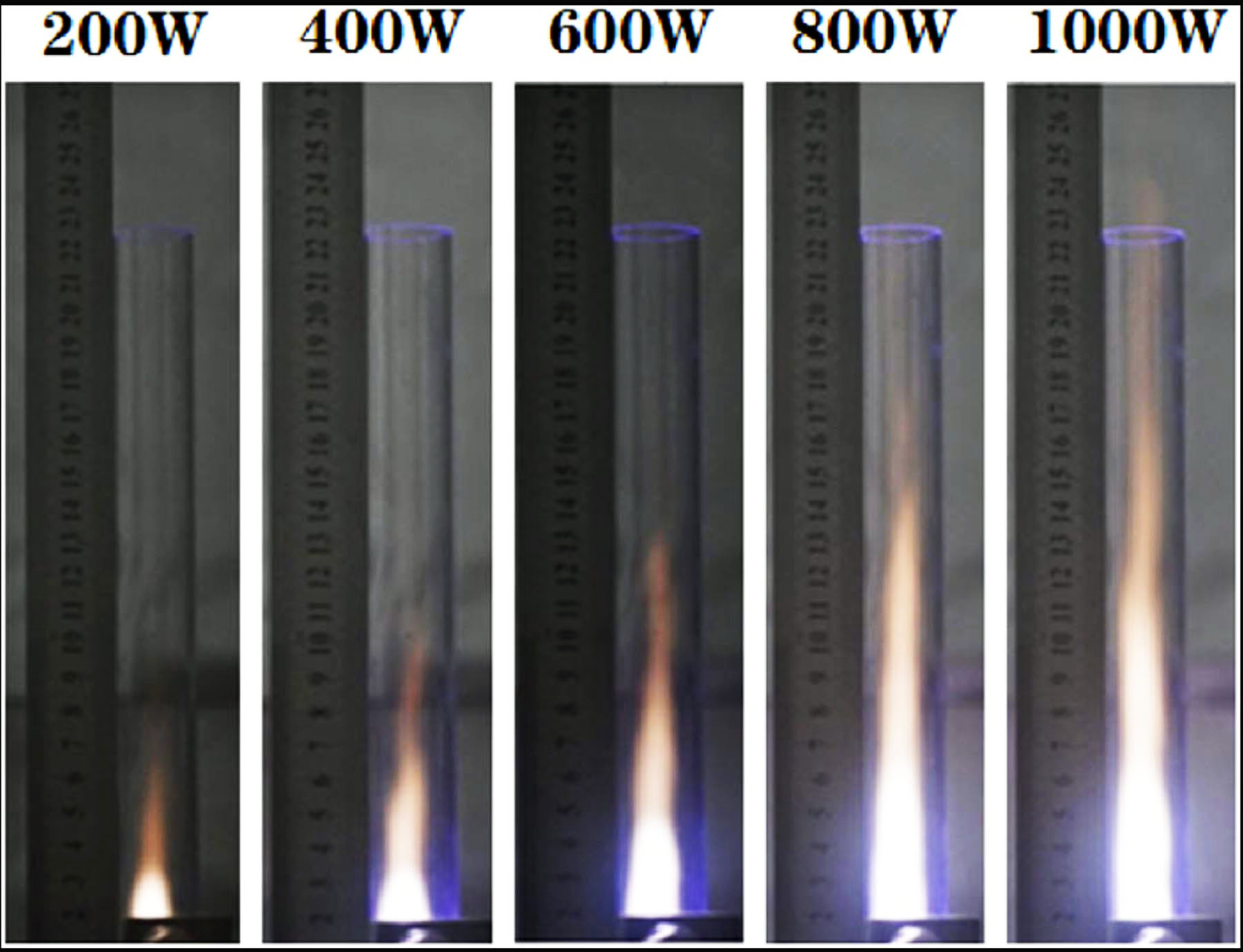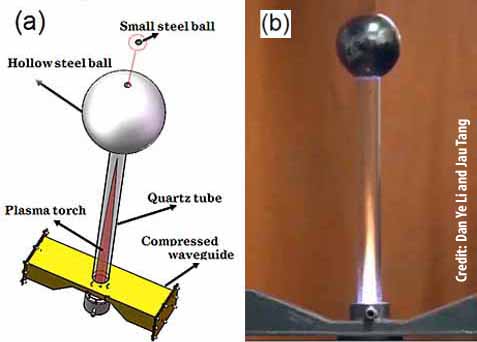subscribe@techtoday.us

The Engine Doesn't Burn any Fossil Fuels
our coverage of our tecnological world.
pierceaj@techtoday.us


A recent research laboratory breakthrough created a small prototype jet engine that was powered by a stream of ordinary, but ionized, compressed air. Photo 1a shows you a labeled diagram of the laboratory setup to test the small jet engine. Photo 1b shows the engine propelling thrust. The photo view shows you the propulsion forces being channeled out of the engine into a quartz tube that is capable of withstanding the extremely high temperatures of the jet plasma. The researchers observed that “the length of the flame increased with the increasing (microwave) power. In addition, changes in the injected airflow also affected the flame length”. Photo 2 shows you the physical change in the output at the different input power settings the researchers observed.
To measure the output pressure of their small jet engine the researchers needed to use old fashioned ingenuity since normal measuring tools couldn’t survive the extremely high temperatures of the generated plasma. They used a hollow steel ball that they could fill with steel beads to increase its weight. See photo 1a and 1b again. They extrapolated the jet pressure of their engine by how much weight it would take to keep the steel ball from starting to physically show signs of movement. Rattling in place but not enough to cause the ball to topple of the tube.
To create thrust from ordinary air the researchers used an air compressor and then sent the compressed air through a duct into a “2.45 GHz magnetron microwave reaction chamber” where the microwave energy ionized the air, pressurized it, and heated it so it flowed into the engine as 1,000 degree Centigrade (1,832 Fahrenheit) plasma. It seems farfetched that ionized air could ever be turned into a source of high energy. That is until you realize that lightening is ionized air and I am sure you already know how much energy a lighting strike contains.
The air compressor and the magnetron used in their experiment both run on electricity and according to the researchers the electric power needed to run both units could be supplied by a Tesla vehicle’s battery pack. The new Israeli designed commercial regional airplane has a lithium ion battery pack with twelve times the electric capacity of a Tesla. If this laboratory breakthrough successfully scales up one day, commercial jet planes could fly on ionized air.
This research was conducted by Dan Ye Li and Jau Tang at the Institute of Technological Science, Wuhan University, China. For a more technical explanation of their research, use this link to read the authors published research. https://aip.scitation.org/doi/full/10.1063/5.0005814. For a short video that explains the significance of the technology. https://www.youtube.com/watch?v=zreTrshsg-c&t=248s
The positive effect of such an airplane is it could lower the 4 to 9 percent of CO2 and other global warming gases that commercial jet air travel produces yearly. The down side of this technology breakthrough is ionized air produces ozone and ozone is a powerful greenhouse gas that also affects plants and animals.
Taking it a Step Further
Research how past and present human technology creates the ozone that is now in our atmosphere.
What are the similarities and differences between this engine and the microwave oven that you have in your home.
Create a video or poster that describes how a microwave oven works.
